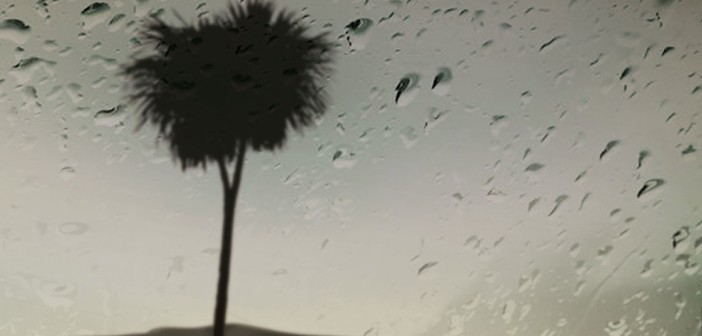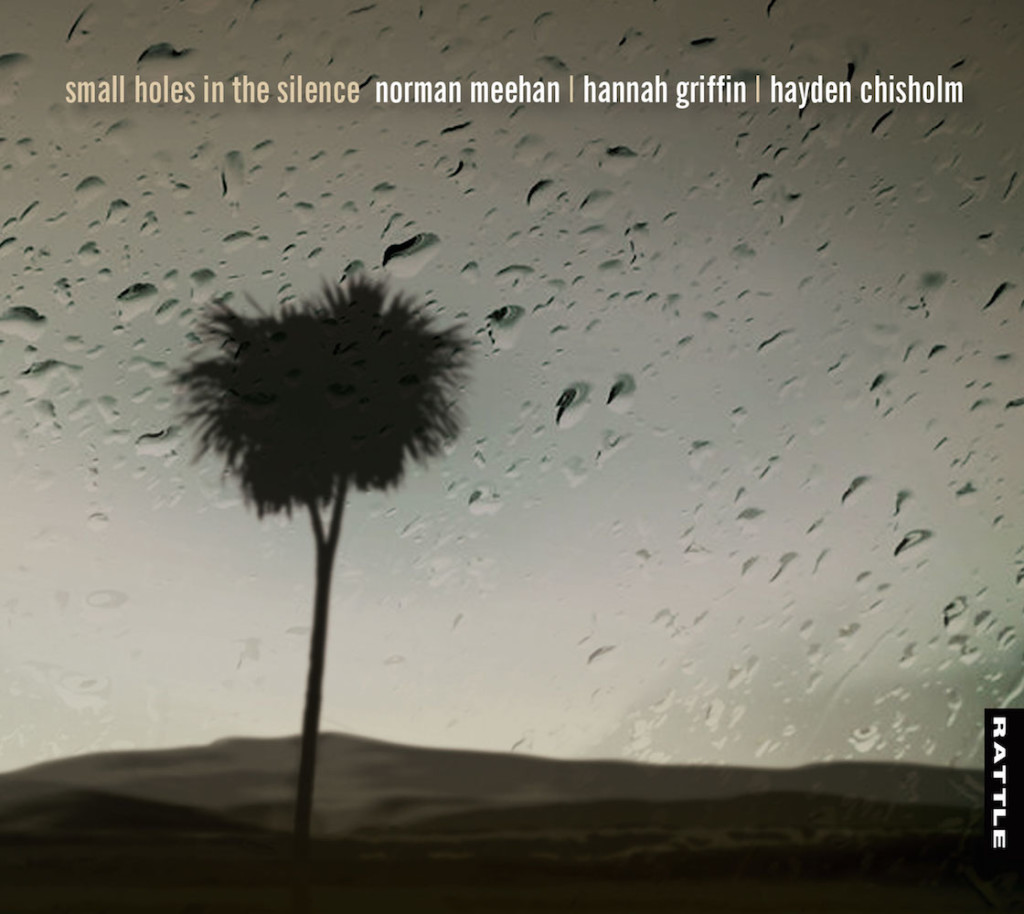Rattle Records began as a small niche New Zealand label run by drummer and sound engineer Steve Garden which started in 1991, surviving and thriving since then on a combination of classical, jazz, arthouse and Māori recordings. Inspired by German label ECM, Rattle started with From Scratch, a group using PVC pipes and led by local composer/improviser Phil Dadson, an antipodean offshoot of British Marxist composer Cornelius Cardew’s Scratch Orchestra. At first Rattle operated as a ‘hobby’ label, releasing an album a year, but in 1994 it had an unexpected hit with Te Ku Te Whe (The Woven Mat Of Sound), an album featuring pre-European Māori instruments (taonga pūoro) by Māori composer, poet, singer and university lecturer Hirini Melbourne, who died in 2003, and pākehā musicologist Richard Nunns, who continues to record for the label.
The result of 30 years research by the duo, at the time Garden thought the album ‘would probably appeal to musicologists with a special interest in Māori culture’, but it eventually went gold – 7,500 copies in NZ – in 2002, and continues to be the label’s highest seller. I remember writing to them from Sydney, sending a cheque and asking for a copy. They ignored the cheque, and sent me the album gratis, along with some publicity material. An album of remixes of Te Ku Te Whe by prominent New Zealand reggae, dub and electronica musicians such as Epsilon Blue, Unitone Hi Fi, Warren Maxwell (of Trinity Roots), the Nomad and Salmonella Dub followed in 2006, winning Best Māori release at the 2007 NZ music awards, and the original was re-released in a double CD with the remixes.
A further CD/DVD release by Melbourne and Nunns, Te Hekenga-a-rangi, with Maori singer Aroha Yates-Smith, followed in 2003. The label continued with one or two releases a year until 2006, including collaborations with Richard Nunns by New Zealand composer Dame Gillian Karare Whitehead, (IPU, 1998), who was head of composition at the Sydney Conservatorium for four years, and jazz saxophonist Chris Mason-Battley (Two Tides, 2006). The latter marked a substantial increase in Rattle releases, with four in 2006, including a CD and DVD by internationally renowned Greek-New Zealand composer John Psathas, View from Olympus, awarded Best Classical Album in the 2007 NZ Music Awards. Psathas had been commissioned to write music for the opening ceremony of the 2004 Athens Olympics, and the album drew on this. Almost everything Rattle released prior to that was recorded ‘basically for nothing’ in the Garden Shed, Steve Garden’s studios at the bottom of Asquith Avenue in suburban Auckland, but the Psathas release began a relationship with Victoria University of Wellington, now the NZ Music School, where Norman Meehan was head of jazz studies (he retired in 2015). In 2012 Rattle became part of Victoria University Publishing, managed by Fergus Barrowman, and a slew of new releases eventuated, including Michael Houston’s performance of Beethoven’s 32 piano sonatas in a 14-disc box, recorded in Victoria University’s Adam Concert Room. The presentation and design aspect has always been foremost in Rattle releases, and all have come in handsomely decorated CD formats, lavish, hardbound cardboard cases that look more like books than jewel-boxes. They have also moved into MP3s and streaming.
Norman Meehan’s recordings with Rattle began in 2010 with Buddhist Rain, a collaboration with singer Hannah Grifffin, Bill Manhire, now the inaugural NZ poet laureate, and saxophonist Colin Hemmingson. https://www.youtube.com/watch?v=6BceEW6An24
This was followed in 2011 by a CD/DVD release, Making a Baby Float, without Hemmingson, and the same year saw an award-winning collaboration between Richard Nunns and Maori singer Whirimako Black, Te More (The Tap Root), as well as a CD/DVD collaboration between Nunns, US pianist Marilyn Crispell and saxophonist Jeff Henderson. No fewer than 23 releases saw the light in 2011, including John Psathas’ Helix, and seven releases featuring transposed Canadian jazz trumpeter Dave Lisik, who teaches jazz composition at the NZ music school. 2012 saw the release of Lisik’s Walkabout, with the Australian Jazzgroove Mothership Orchestra, among twelve other albums, and 2013 White Lies, the music by John Psathas for the film written by Witi Ihimaera and starring Whirimako Black. Among the 10 releases in 2014 was the mammoth Michael Houston Beethoven package, nominated for the 2015 NZ Music Awards, and an album of gamelan music, and among the 13 classical and jazz releases in 2015 was a collaboration between The Chris Mason-Battley Group and John Psathas, and Small Holes in the Silence.
This is actually the fifth collaboration of sung poetry Meehan has been involved in with Hannah Griffin over a 10 year period – other releases are Sun Moon Stars Rain (2009), inspired by the poetry of ee cummings, with Colin Hemmingsen on reeds and Nick van Dijk on trumpet (Attar CD), mixed by Steve Garden and described by Mike Nock as ‘an outstanding production on every level’, and These Rough Notes (2012), a book and CD by Bill Manhire, photographer Anne Noble, Meehan and Griffin about the tragedies of Scott’s polar expedition of 1912 and the crash of Air NZ901 into Mt Erebus in 1979. Prior to that Meehan had released Modigliani (Ode Records, 2007), for jazz quartet, a finalist for Tui Jazz Album of the Year, and The Bells (Yellow Eye Records, 2004) for jazz quintet. He has also published a biography of Mike Nock and Conversations with Paul Bley.
The title Small Holes in the Silence comes from the poem Rain by Māori poet Hone Tuwhare, as well as being the tile of Tuwhare’s Collected Poems, and according to his biographer Janet Hunt, the poem has already been set to music by a number of NZ classical composers. In addition, there is a well-known version of the poem sung by troubadour Don McGlashan (touring Australia this November) with piano by David Guerin and euphonium by McGlashan, included on an album of musical settings of Tuwhare’s poems by NZ singers and songwriters, Māori and Pākehā, including Whirimako Black. Undaunted by this, Meehan entrusted Griffin with a very simple, unfussy melody punctuated with his sparse chords, and her clear rendition of the poem is an unqualified success. Whereas Guerin attempts to simulate the rhythm of rain, Meehan works against the rhythm and the text, leaving Griffin’s unadorned version of the poem to suggest a great deal. A similar dynamic applies to their setting of James K. Baxter’s ‘High Country Weather’, compared to the version sung by female singer Jordan Reyne and Dr Kevorkian and the Suicide Machine in a drawn-out goth-electronica setting, which is dark and foreboding. The Meehan-Griffin version which opens ‘Small Holes’ is almost hymn-like, starting with a lovely sax solo by Chisolm, sung clearly and unembellishedly by Griffin, with sparse accompaniment by Meehan, and was compared by one listener to ‘Amazing Grace’.
In an interview on Radio NZ Meehan indicated that he was aware of and liked both these other versions, but simply wanted to do something different. They recorded some twenty poems, but had to jettison a few which didn’t work or suit the prevailing rather sombre mood of the album. These included a poem by the late David Mitchell, ‘Aesthetics’, which they included on the recent NZ tour to promote the album, but was too upbeat for the album. Manhire’s ‘Erewhon’ – a favourite subject in New Zealand (‘nowhere’ backwards, from the 1872 novel by Samuel Butler set in NZ) – seems composed for a musical setting, with rhymes and lots of repeated refrains, and some lovely sax breaks. Similarly with Manhire’s ‘Ballad of the Hurting Girl’, about a woman in prison, which has a good deal of repetition, and even a chorus. Alastair Campbell’s ‘Blue Rain’ starts with a sax solo, and has a more dramatic accompaniment, as befits ‘a borrowed world/collapsing all about us/in blue ruins’. ‘Death of a Poet’ is another Manhire poem, with the sax playing an initial lament, commemorating the Cornish poet Charles Causley, ending ‘poet’s words will unwind/The tangle in the brain’, which the singing enunciates suitably clearly. A couple of Campbell’s poems follow, one short and one longer, embellished with Chisholm’s sax, which is entirely improvised, but provides effective modal commentary on each poem, with occasional brief melodic solos by Meehan, and Griffin’s pellucid performance.
‘Warehouse Curtains is another Manhire ballad, with much song-like repetition, and some double-tracking of the voice, followed by two works by Eileen Duggan, a Catholic poet who died in 1972, of which ‘Untitled’ is set for just voice and saxophone, and ‘Frost’, although a short poem, receives the longest setting on the album, at more than seven minutes, with a lengthy intermezzo by sax and piano. The shortest arrangement follows, a double-tracked ‘Kia ora’ greeting by Tuwhare, and the album ends with a David Mitchell poem, something of an anomaly in this company, where Griffin has to sing a very colloquial and masculine piece of beat poetry. She comes through with flying colours, and the entire album is a resounding success. Meehan has indicated that jazz albums in New Zealand normally sell only between one and two hundred copies, so setting poems to music has more rewards, especially if backed up by a tour. Sung poetry is a very European subgenre, perhaps best illustrated by the extraordinary Polish singer Ewa Demarczyk, also known as the ‘black angel’, after one of her signature songs from the early 1960s. Demarczyk, a reclusive person who trained as an actor, also performed, in Polish and Russian, poems by Polish and German expressionist poets to a jazz accompaniment, in a highly dramatic fashion. I only recently discovered her, and she might just qualify as the first goth. Hannah Griffin is perhaps not in the same class, but in a New Zealand context, she and her male cohorts provide a substantial example of the sung poetry subgenre.
More information here.





